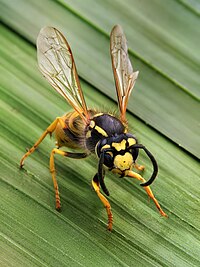
Photo from wikipedia
Supply networks (SNs) play a vital role in fuelling trade and economic growth. Due to their interconnectedness, firm-level disruptions can cause perturbations to ripple through SNs, magnifying initial impact. Contemporary… Click to show full abstract
Supply networks (SNs) play a vital role in fuelling trade and economic growth. Due to their interconnectedness, firm-level disruptions can cause perturbations to ripple through SNs, magnifying initial impact. Contemporary research on ripple effects focussed on understanding various structural features of SNs to predict and control disruption propagation. Our work adds to this body of knowledge by analysing an intriguing topological property that emerges in SNs: ‘nestedness’, which is defined as a pattern of organisation where products that are supplied by specialist suppliers are a subset of products that are supplied by generalist suppliers. In other words, generalists are also specialists. While previous research examined the emergence of nestedness and its possible reasons, its relationship to SN resilience remained unknown. Here, we develop a cascade model by bringing together the product-supplier-buyer structure; which provides us with fine-grained information on SN dependencies. We simulate disruptions in nested and non-nested organisations of the global automotive SN, and find that nested organisations are significantly more robust to random disruptions but vulnerable to hub disruptions under cascade conditions. However, nested structures are not as resilient; as they do not benefit from a response strategy where buyers seek alternative suppliers; because alternative suppliers do not exist. On the other hand, randomly connected SNs are vulnerable to cascades but can allow network reconfiguration.
Journal Title: International Journal of Production Research
Year Published: 2021
Link to full text (if available)
Share on Social Media: Sign Up to like & get
recommendations!